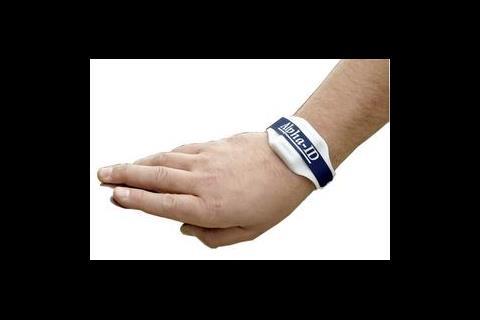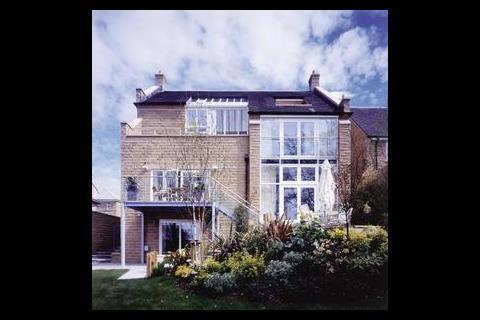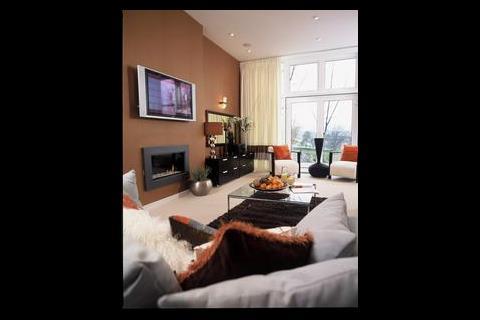How do we actually use our homes? This is the question that a team of researchers and developers are hoping a unique surveillance operation – of a willing family of four – will answer, providing the key to the make-up of the house of tomorrow
Forget Channel Four’s Big Brother and its squabbling housemates. In Sheffield, a quieter but potentially far more significant experiment in shared living is taking place. For six months, a family of four will have their every move scrutinised, in an exercise that could result in the advent of the world’s first truly “intelligent” home.
The study is taking place in the purpose-built David Wilson Homes Project:LIFE research house and, with the aid of research by the Universities of Nottingham and Leicester, will help the developer understand how houses should be designed for today’s families.
During the six month project, the Parnells, Nick and Sue with daughters Lucy (16) and Hazel (13), will be tagged with wristbands and monitored to ascertain how they use the different rooms in the specially designed five-bedroom house on a day-to-day basis. In fact, researchers from the University of Nottingham’s School of the Built Environment and the University of Leicester’s Management Centre are already monitoring the Parnells’ every move.
The family’s movements around the house will be monitored, not with Big Brother-style cameras, but with the latest radio frequency identification (RFID) active tagging technology. It is thought to be the first time that RFID has been used in a domestic situation. The RFID occupant tagging uses a 434Mhz VHF active tagging system, with each wristband tag broadcasting a unique ID at 0.4 second intervals. These transmissions are monitored by a network of 26 readers placed strategically about the home, hidden within the stud partition walls. In turn, the network regularly updates the location to tracking software running on a server PC to provide 24/7 event recording (see screengrab).
The system is primarily intended to record the movements of each of the occupants; the location they visit, time of visit, the route they take to get there, and the time they actually spend there. The data will be studied and follow-up interviews will be conducted with the family using questions tailored from the results of the tracking. The in-depth interviews will aim to monitor how family dynamics and lifestyle are enhanced by the house design.
Accurate post-occupancy evaluation of buildings is an essential part of the evolutionary design process. RFID technology has the potential to provide designers and facilities managers with an accurate picture of how their buildings are being used, thus leading to the improvement of existing buildings and the design and creation of better more functional buildings. It is easy to envisage the RFID system being the cornerstone of an even more intelligent building, as it can be integrated into building management systems. Energy can be saved when a room is known to be unoccupied by automatically adjusting the lighting, heating, ventilation and air-conditioning systems.
The first commercially available RFID kits aimed at the home automation market are now available. These kits are designed for the real-time detection of people, pets, vehicles, personal assets or anything else that can be identified using RFID tags. Such systems have many uses including the automatic control of lights, heating, garage doors, security and email/SMS notification when children get home from E E school safely. These are just a few examples of potential RFID applications within buildings. The technology will become more widespread as it becomes more advanced and cheaper through developments such as systems using existing Wi-Fi networks.
The development of RFID technology and its application within buildings could result in the advent of the truly intelligent building, which can respond in real time to the behaviour of occupants and their requirements. However, there is clearly a need to establish its effectiveness for certain applications and legislation will need putting in place to protect people’s privacy and civil liberties before broad adoption of the technology is seen as acceptable.
The University of Nottingham’s research is part of a wider study undertaken by the university to evaluate how post occupancy data can be used effectively to influence design, reduce energy consumption and control “intelligent” buildings. Dr Gillott is currently seeking funding and project partners/buildings to further investigate RFID building integrated applications – so if you want to know what it could be like living in a Big Brother house get in touch with Mark at www.projectlife.info.
Dr Mark Gillott is a lecturer in Sustainable Energy Technology at the University of Nottingham’s School of the Built Environment and Richard Holland is a PhD student at the school. Dr James Fitchett is a reader in marketing and consumer research at the University of Leicester’s Management Centre
What’s indoors

The Parnell family will live in the specially designed 325m2 split level house for the six months of the project. The house is designed over four floors, including a basement, and is distinctive for its extensive use of self-cleaning glazing linked with balconies to bring the garden and living spaces closer together.
Environmental monitoring will be undertaken using a network of temperature/humidity sensors to study comfort levels, and energy meters will monitor the usage of electrical appliances and energy consumption. The Project:LIFE house is on a green electricity tariff and has been designed with a number of energy saving features, such as high levels of insulation, heat recovery ventilators, a heat pump, zoned under-floor heating and maximal use of natural daylight.
The house also includes some more luxurious features, including a bath with waterproof wall screen TV (pictured) and a radio in the shower, as well as practical additions such as a person sized automatic shirt de-creaser, a filtered drinking water tap in the kitchen and phones that double as intercoms.
Source
Building Sustainable Design























No comments yet